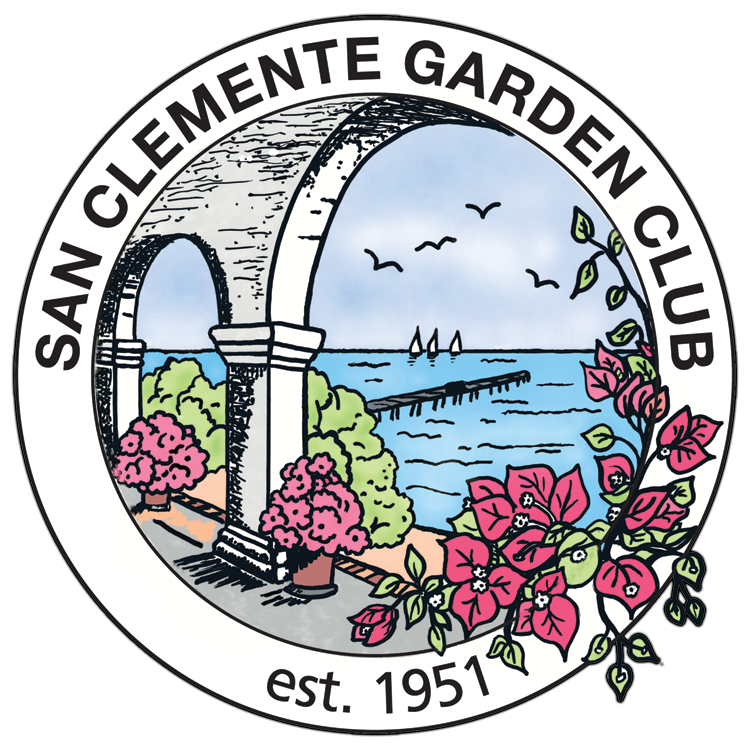
2021 Hypertufa Workshop
Kieu Doan created this hypertufa planter. She added decorative interest at the top of the planter by using shells.
What’s Hypertufa ?
Hypertufa was originally invented for alpine gardens in place of antique watering troughs, which were heavy and expensive. In addition to planters/pots, you can create almost anything you can think of out of hypertufa. Some great uses are stepping stones, planter bases and risers/feet, trays, bird baths, etc. The possibilities are unlimited.
The photos on this page are from the Hypertufa Workshop that was held on October 27th at Launa Gould’s home.
You’ll notice masks being worn during the workshop. It’s always smart to wear a mask whenever you work with cement. Without one, you’ll be inhaling harmful cement dust that contains silica. And—it’s even better if you wear an N95 or KN95—which filters out 95% of the particles. Standard masks do not filter out the silica and there is a chance you could inhale particles.
To create our planters, we used a mixture of:
1 part Portland Cement
1 part Peat Moss
1 part Perlite
Check out the photos below to see awesome creations made by some of the participants.
And—if you haven’t already viewed them, go to some of the older photo albums and check out some unique creations there too. One that even utilized gloves filled with hypertufa mix. This you must see!
Then, because we know you will absolutely want to—watch for the next workshop and be sure to attend. You will definitely want to make one for your garden too!

Lana Doyle's planter already has bulbs sprouting. It won't be long before she has beautiful blossoms! You can plant anything you would like to in hypertufa planters.

Have Fun but Be Smart! Don't forget why we wear a mask whenever we are working with cement!

Another planter Lana created. The bulbs that were planted in this container are just beginning to sprout too. One of the benefits of hypertufa is its ability to drain water which prevents the soil from retaining too much water.

A large, plastic clam shell serving bowl makes the perfect mold for your hypertufa planter.

And sometimes you line the mold with plastic because you just don't feel like cleaning the mold after removal because all of the hypertufa mixture may not come off.

Sometimes you intentionally line your mold with a plastic bag to make removal of your planter easier. Or to add texture—created by the creasing of the plastic bag—to the outside of the planter as Nina Ostensen did with her clam shell planter.

This planter is a perfect example of the visual interest you can create by the addition of gems, shells, stones, etc. But, it may end up so beautiful, like this one created by Nina Ostensen, that you may not want to plant anything in it.
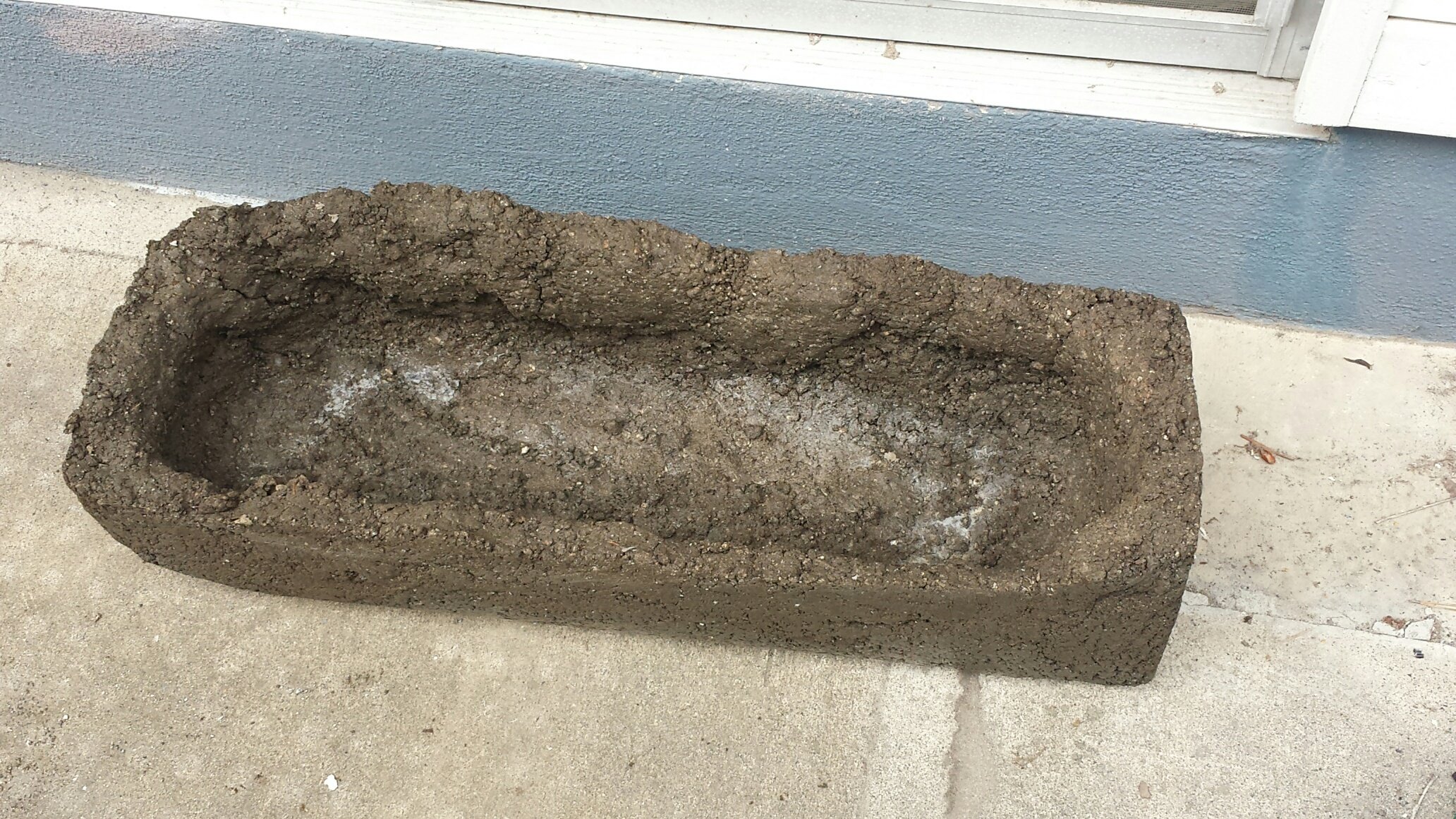
Just because you are making a planter, it doesn't mean that it has to be deep. You can make a shallow planter just as easily as a deep one. This is also an example of a planter in the process of drying.

Even though the plants are taking over the container, you still have visual interest in the clam shell shape of the planter and the embellishments added along the upper edge.

You can use anything as a mold. Think out-of-the-box. Because, sometimes you just might want to use a cardboard box.

This beautiful oval planter was created by Teresa Whitney by utilizing the green bucket as the mold. The softness of the succulents against the roughness of the hypertufa planter creates a beautiful juxtaposition. Teresa also created the beautiful stepping stone.
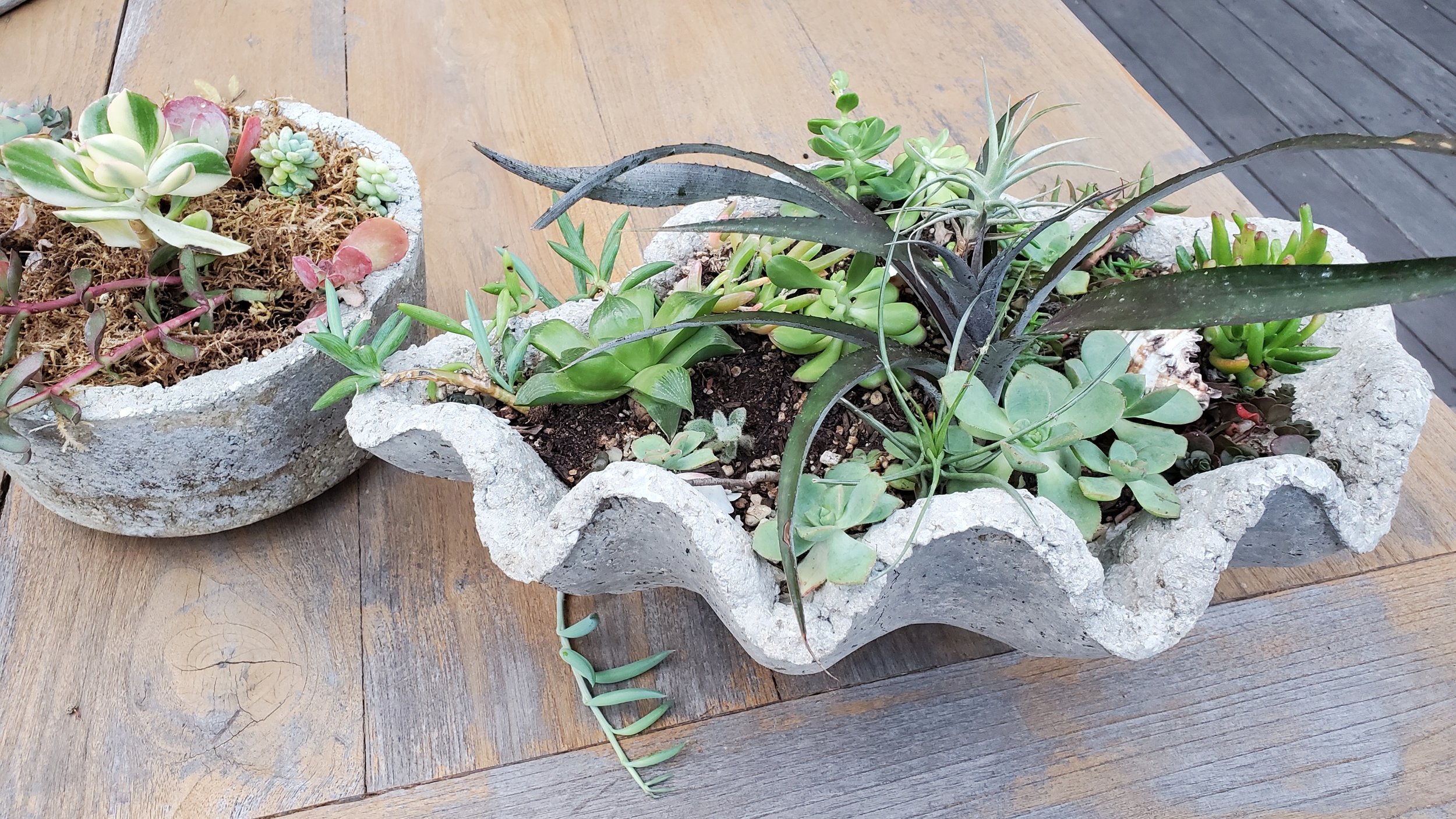
Launa Gould created two planters, different shapes and sizes, each unique in its own way. It just goes to show, a small round bowl as a mold will create a hypertufa planter just as beautiful as the large clam shell mold.

Teresa Whitney created this beautiful planter. The pattern created by the mold is clearly visible on the outside of the planter.
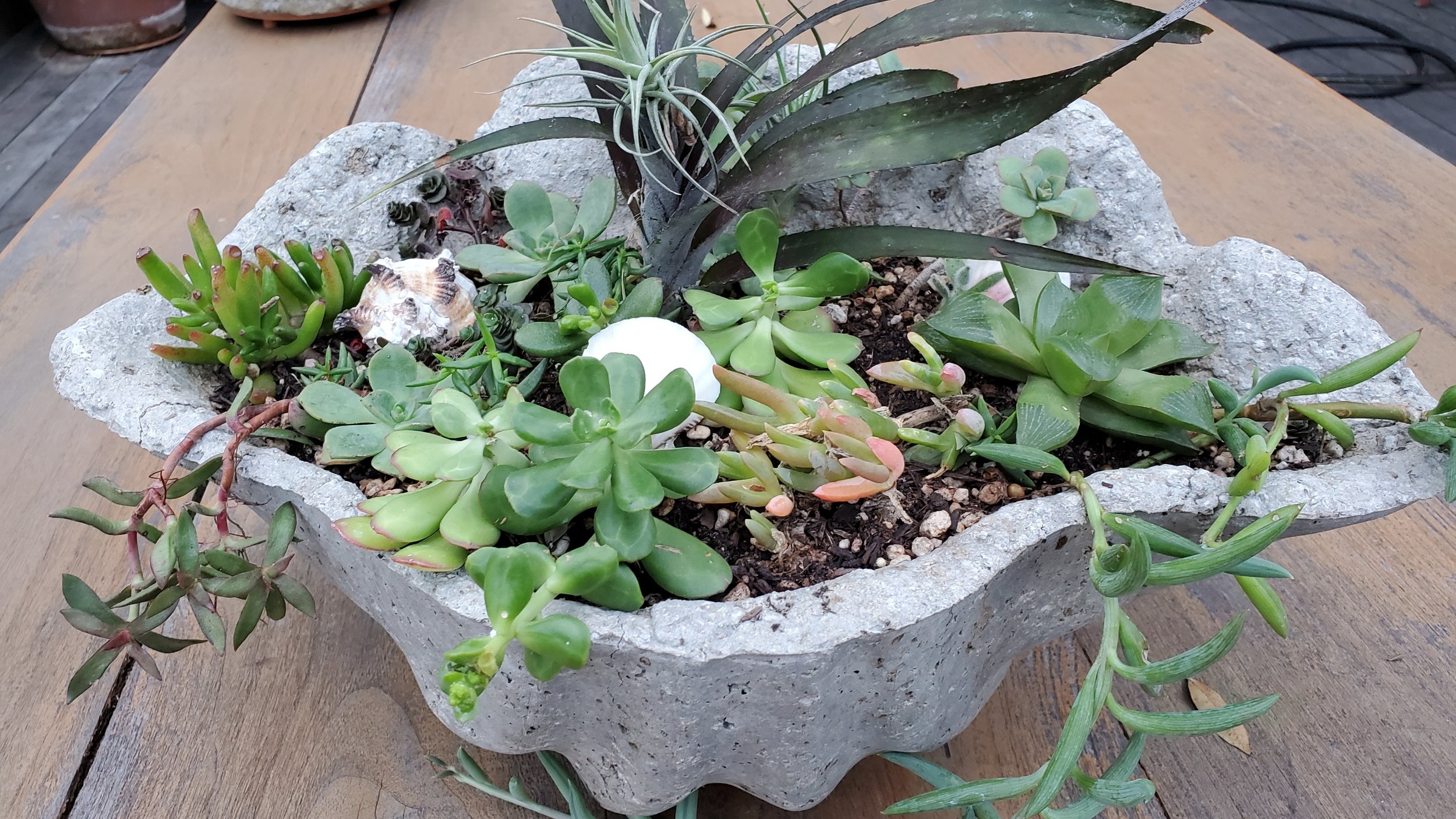
Another example of the large clam shell mold being used by Launa Gould, with a completely different result. Without any type of embellishment—the beauty of the hypertufa shines on its own.
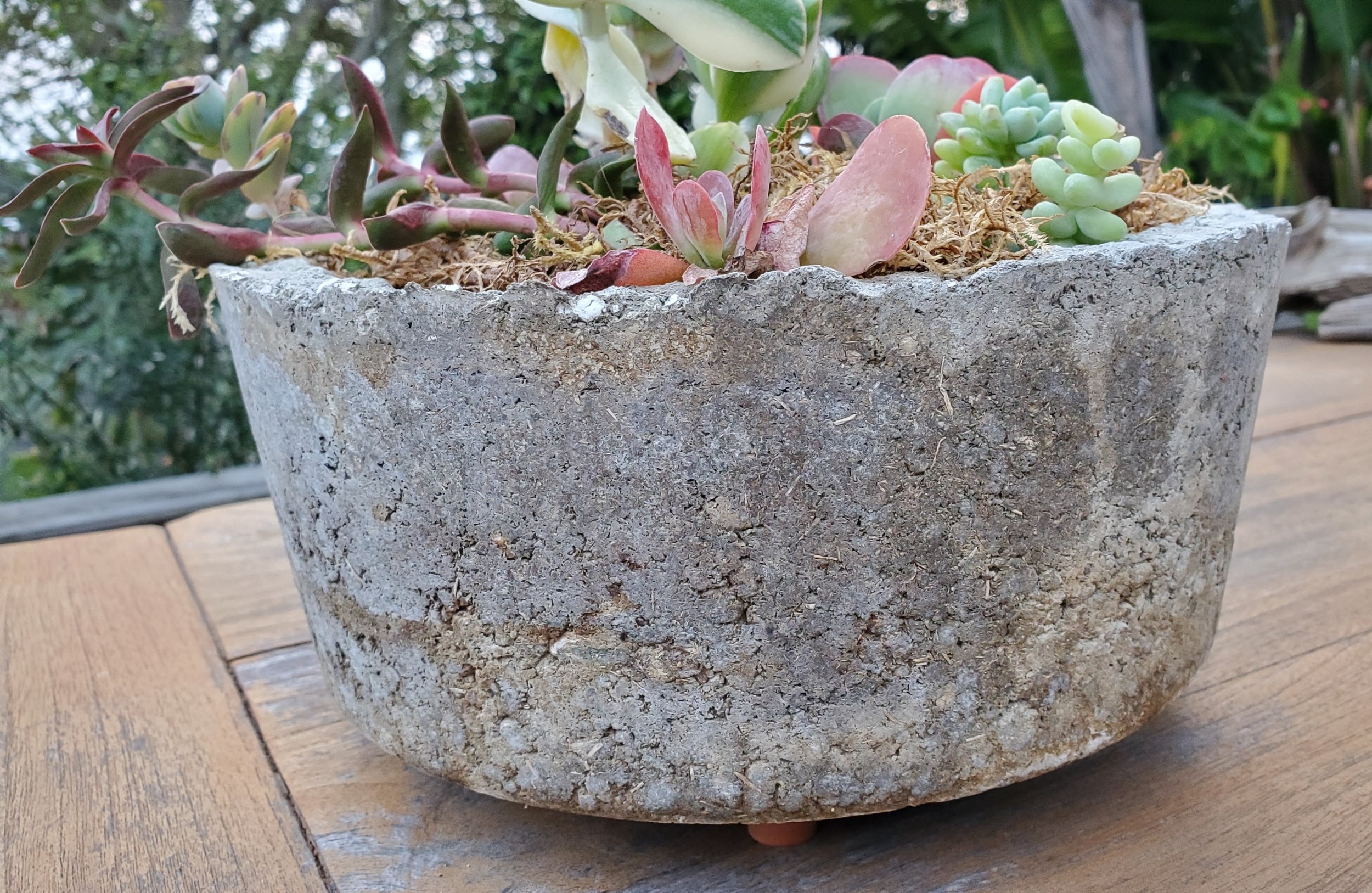
This is a close up of Launa's round planter that demonstrates beautifully the variation that can be achieved when creating with this medium. But—maybe she actually bought it at an antique store.

Shinn-Ye Lo utilized a plastic shoe box as a mold to create this planter. But, unless you knew that a shoebox was used, you could never tell. What kinds of other containers could be used as a mold. Join the next workshop and bring something unusual to use as a mold.

This photo lets you view Shinn-Ye's planter from another angle. Succulents do exceptionally well in hypertufa planters. That's why you frequently see them planted in hypertufa planters.

Three more planters created by Teresa Whitney at an earlier workshop. Each utilizing a mold of a different shape. You just might find a hypertufa planter for sale at GardenFest. It won't last long—so get there early!
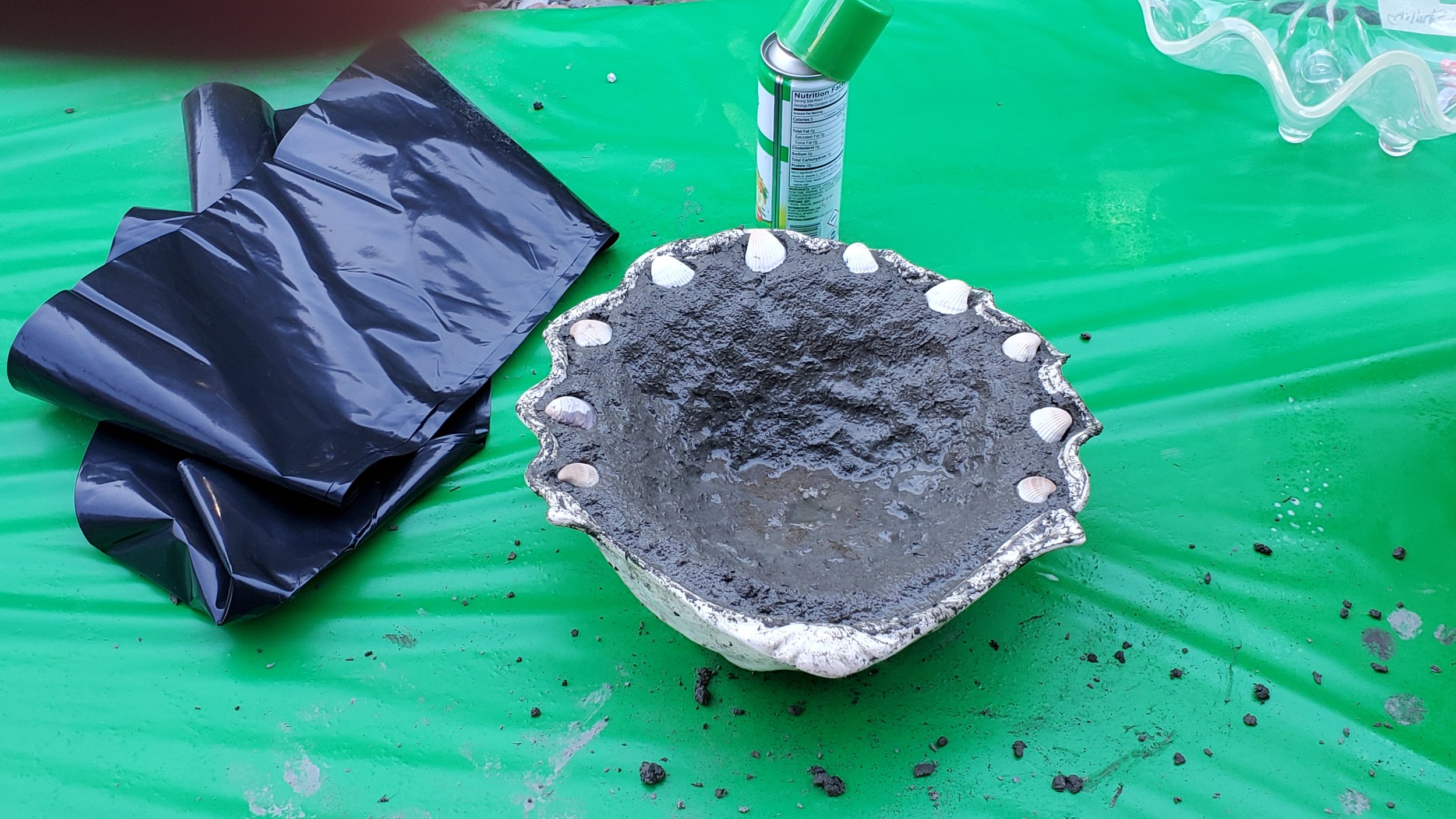
Prior to filling the shell mold with the hypertufa mixture, it was sprayed liberally with non-stick cooking spray. After the mold was filled and, in this case, shells added, it was placed into the black plastic bag. The opening was tied securely, and it remained inside for over two weeks while curing/slowly drying.
Click the link to review the steps we took to create our amazing hypertufa planters.
